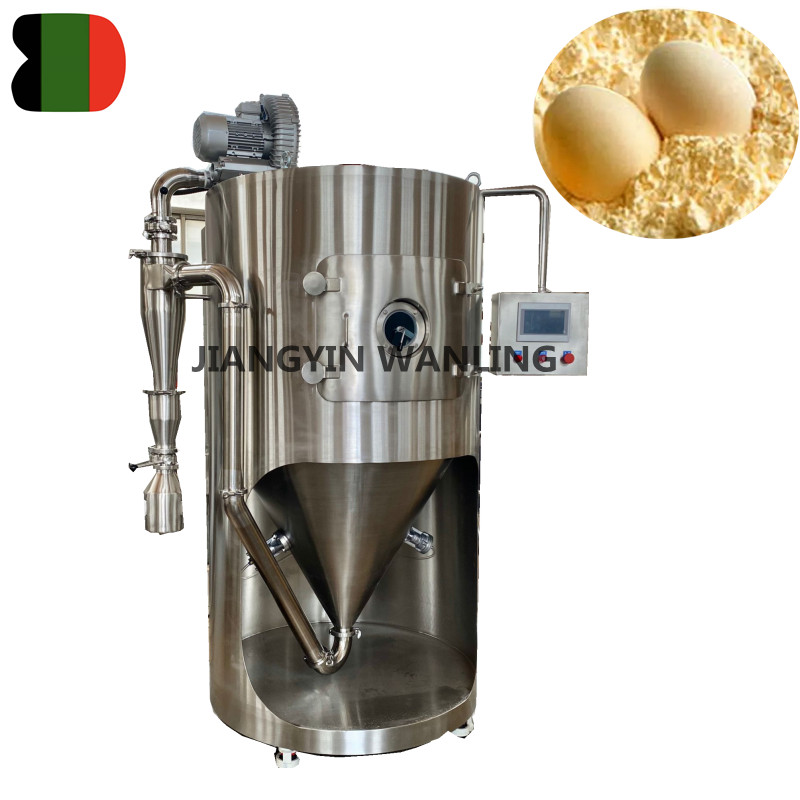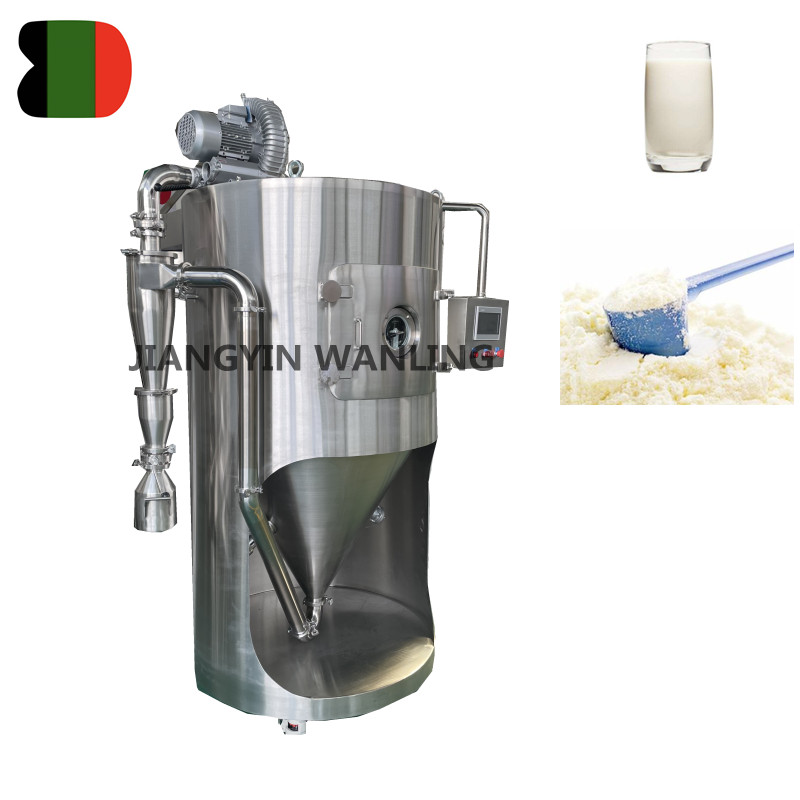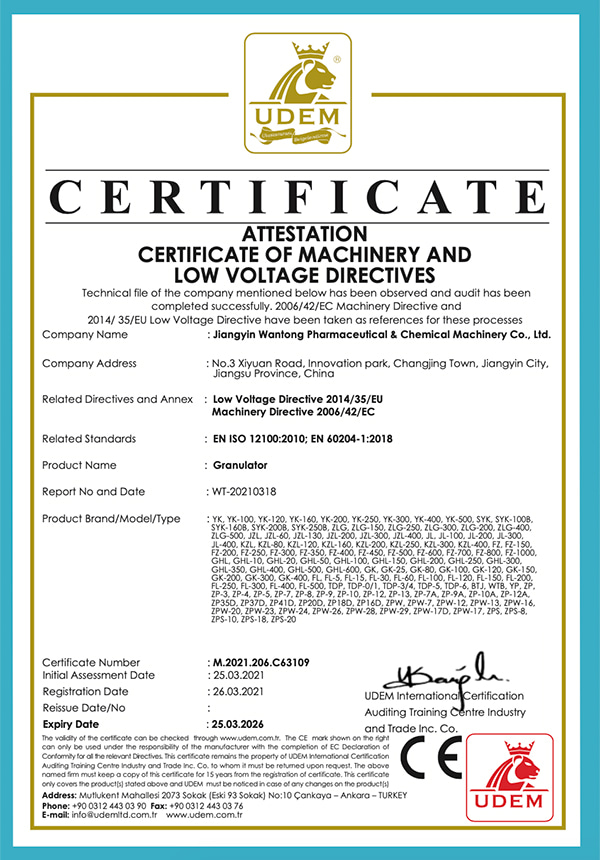Spray Dryer Manufacturer
-

LPG Spray Dryer Machine For Milk Powder
High-speed centrifugal spray dryer is a new type of high efficiency drying process equipment, it can make the solution, emulsion, suspension... -

LPG 5L Centrifugal Spray Dryer For Coffee Milk Powder
Application: High-efficiency drying process for solutions, emulsions, suspensions, and pastes into dry powder, fine, or medium granular prod... -

LPG 5L spray dryer for egg powder
The 5L spray dryer is the smallest dryer machine, It can dehydrate 3-7kg water every hour, suitable for lab use or do test. The spray dryer ...
Spray dryer is a kind of continuous atmospheric pressure dryer. Spray the liquid material into a mist using special equipment, allowing it to come into contact with hot air and be dried. Used for drying some thermosensitive liquids, suspensions, and viscous liquids, such as milk, eggs, tannins, and drugs. It is also used for drying fuels, intermediates, soap powder, and inorganic salts. It is good suitable for generating powder and granular solid products from solution, lotion, suspension and paste liquid raw materials. Therefore, spray drying is a very ideal process when the particle size distribution, residual moisture content, bulk density and particle shape of the finished product must meet accurate standards.

About Us
Honor
-
 Honor
Honor -
 CE
CE
News
-
Industry News 2025-10-22
1. What a Horizontal Ribbon Mixer Is and Where It’s Used A horizontal ribbon mixer is an industrial ...
View More -
Industry News 2025-10-16
A tray dryer is a batch drying equipment widely used in the pharmaceutical, food, and chemical indus...
View More -
How does a double cone blender compare to ribbon blenders or V-blenders for industrial applications?Industry News 2025-10-09
A double cone blender has distinct advantages and limitations when compared to ribbon blenders and V...
View More -
Industry News 2025-10-01
Electric-Powered Tray Dryers Advantages: Precise and Stable Temperature ControlElectric-powered tr...
View More
Industry Knowledge Expansion
What factors influence the efficiency of a spray dryer?
Feed Material Properties:
The characteristics of the feed material, such as its viscosity, surface tension, solids content, and thermal sensitivity, can significantly affect the efficiency of spray drying. Materials with higher viscosity or surface tension may require more energy for atomization and evaporation, while thermally sensitive materials may require lower drying temperatures to prevent degradation.
Atomization Technique:
The atomization method used to convert the liquid feed into droplets can impact the efficiency of spray drying. Different atomization techniques, such as pressure nozzles, rotary atomizers, or centrifugal atomizers, have varying effects on droplet size, distribution, and drying rates.
Drying Parameters:
Factors such as inlet air temperature, air flow rate, residence time, and outlet air humidity play crucial roles in determining the efficiency of spray drying. Optimizing these parameters based on the specific characteristics of the feed material can improve drying efficiency and minimize energy consumption.
Design and Configuration:
The design and configuration of the spray dryer, including the geometry of the drying chamber, the size and shape of the atomization device, and the arrangement of heating elements and air flow patterns, can impact drying efficiency. Well-designed spray dryers with efficient heat and mass transfer mechanisms can enhance overall process efficiency.
Heat Source:
The type and efficiency of the heat source used in the spray dryer, such as steam, gas, or electricity, can influence energy consumption and drying efficiency. Utilizing energy-efficient heating systems and heat recovery techniques can improve overall process efficiency and reduce operating costs.
Particle Collection and Separation:
The efficiency of particle collection and separation systems, such as cyclones, bag filters, or electrostatic precipitators, affects the recovery of dried product and the removal of fine particles from the exhaust air. Optimizing these systems can prevent product losses and minimize environmental emissions.
What are the differences between cocurrent and countercurrent spray drying?
Flow Direction:
In cocurrent spray drying, both the drying air and the atomized feed material flow in the same direction through the drying chamber. This means that the inlet air, carrying the highest moisture content, meets the wettest particles first, progressing towards the dryer outlet.
In countercurrent spray drying, the drying air and the atomized feed material flow in opposite directions. The inlet air, with the lowest moisture content, contacts the wettest particles first and progresses towards the dryer inlet.
Moisture Gradient:
Cocurrent drying typically results in a smaller moisture gradient within the drying chamber compared to countercurrent drying. This means that the moisture content of the particles exiting the dryer is more uniform in cocurrent drying.
Countercurrent drying creates a larger moisture gradient, with the driest air contacting the wettest particles first. This can lead to more efficient moisture removal but may also increase the risk of overdrying or uneven drying of the product.
Temperature Profile:
In cocurrent drying, the temperature profile within the drying chamber gradually decreases from the inlet to the outlet, as the hottest air contacts the wettest particles first. This can help prevent overheating and thermal degradation of sensitive materials.
In countercurrent drying, the temperature profile is typically higher at the inlet and decreases towards the outlet, as the hottest air contacts the driest particles last. This may result in more efficient moisture removal but requires careful control to avoid overheating the product.
Energy Efficiency:
Cocurrent drying generally requires less energy compared to countercurrent drying, as it operates with lower inlet air temperatures and shorter residence times. However, it may not achieve the same level of moisture removal efficiency as countercurrent drying.
Countercurrent drying can be more energy-intensive due to higher inlet air temperatures and longer residence times. However, it can achieve higher moisture removal rates and may be preferred for drying heat-resistant or high-moisture materials.
Product Characteristics:
Cocurrent drying tends to produce products with more uniform moisture content and particle size distribution, making it suitable for heat-sensitive or delicate materials.
Countercurrent drying can result in faster moisture removal and may be preferred for applications where high production rates or low final moisture content are required.



 Español
Español
